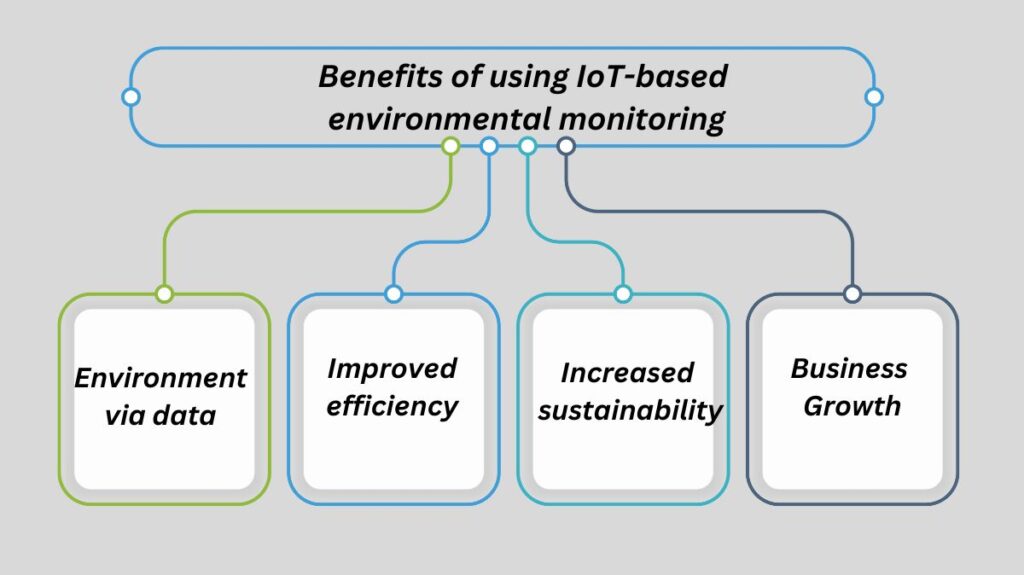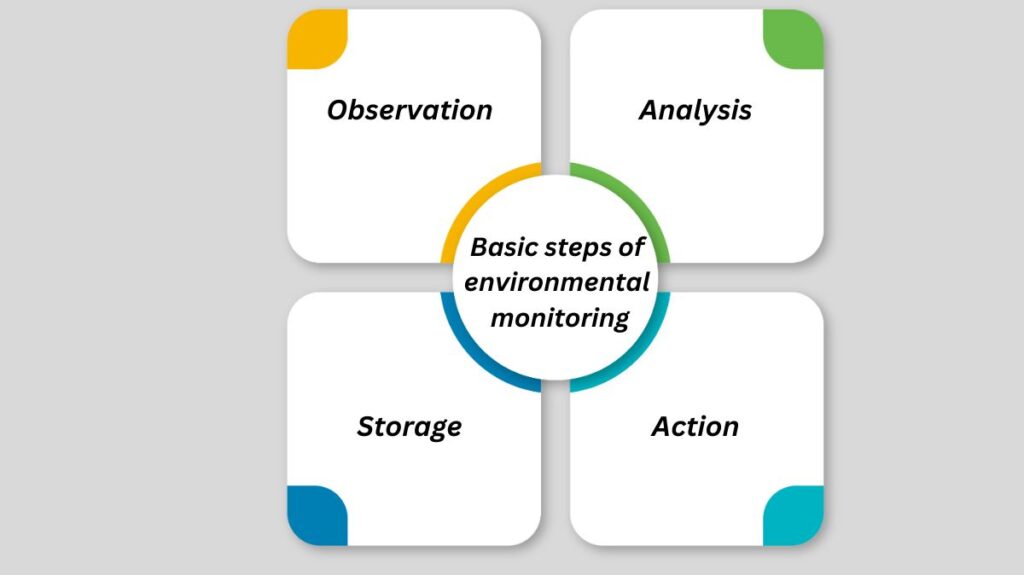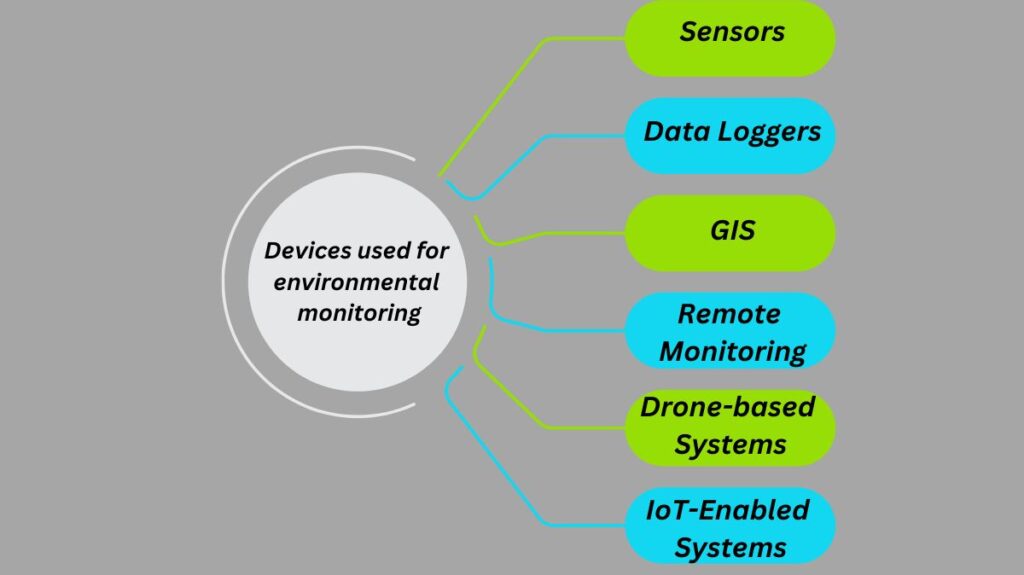What is IoT environmental monitoring?
IoT monitors temperature, humidity, and air quality.
This data can help businesses lessen their local environment’s negative effects and understand their indoor and outdoor environments. As an alternative, it can be applied to alter corporate operations in order to serve the local community or the environment.
These Internet of Things-based tools can be used to identify environmental problems that are often overlooked, accepted, or normalized. protecting workers, guests, and the community at large by enabling companies to take action by minimizing their adverse environmental impact.
Because it can give businesses statistics, real-time data, and insights that help them understand their environmental impact and how to reduce it, as well as comply with environmental protection standards and policies, IoT is consequently growing in popularity across a variety of industries.
What are the benefits of using IoT-based environmental monitoring?

There are several advantages to utilizing an Internet of Things-based environmental monitoring system, such as:
Improved understanding of the environment via data
Enterprises may better understand and measure the environment using real-time data from remotely placed IoT devices. From there, specific efforts can be taken to reduce environmental effect or detect issues like excessive CO2, noise, or air pollution.
Improved efficiency
Organizations are able to detect and resolve issues with real-time data before they worsen. The use of warning alarms allows companies to be more proactive and reactive. Better working conditions, financial savings, and less downtime can all come from this.
Increased sustainability
IoT environmental monitoring solutions assist organizations in determining where they can lessen environmental stress for stakeholders and employees, making them more sustainable over the long run.
Business Growth
Environmental standards are frequently necessary for businesses to demonstrate to their clients that they are forward-thinking companies whose principles align with their own policies and course of action. There can be more assurance that controls and measures are in place that meet the needs of the business and its (or its clients’) environmental concerns when evidence-based systems and outcomes produced.
What are the four basic steps of environmental monitoring?

In order to facilitate crucial insights and decision-making, IoT-based environmental monitoring requires four essential components:
Observation (Monitor the Environment and Collect Data)
Environmental monitoring begins with data gathering and observation. Sensors or IoT devices measure temperature, humidity, and air quality. The Internet of Things sensors deliver environmental data to a central hub. After this, the data can be examined instantly or utilized offline for additional research. These systems frequently result in unanticipated temporal variances and outcomes. For instance, excessive CO2 levels during busy office hours may account for fatigue or difficulty focusing. This also holds true for public areas like pubs and dining establishments, where unnoticed environmental elements could be contributing to patron discomfort.
Analysis (Measure Data)
Analyzing the information gathered by IoT devices comes next. This entails examining patterns over an extended period of time, pinpointing areas of concern, and detecting any associations between environmental factors, time of day, behaviors, and the connections between indoor and outside measurements. Key data points are identified by IoT sensing devices, which can reveal anything from air pollution levels to chemical and water leakage. Businesses may decide how to lessen their environmental impact and quantify their environmental footprint with the use of this data analysis.
While some organizations are concerned with safety, others may be more concerned with worker comfort or other relatively benign factors. For instance, monitoring devices installed in drains can keep an eye out for outside contaminants like paints, fuel, and oil that can damage aquatic life, livestock, or people.
Storage (Catalogue Data)
After analysis is complete, the data must be saved for later access. Businesses can access the data at any time and analyze how their environmental effect is evolving over time with IoT environmental monitoring systems, which save the data in a secure cloud-based database. International databases, like the Microsoft Planetary Computer, store vast amounts of environmental data from all around the world, albeit not all cloud databases are so big.
Action (Provide Actionable Insights From the Data and Analysis)
Businesses must, lastly, be able to act on the information that has been collected and examined. Businesses can use IoT-enabled environmental monitoring systems to learn how to minimize their environmental impact, for as by implementing water conservation measures or employing renewable energy sources. Implementing new technologies, altering operating procedures, or even modifying their overall business plan are some examples of these actionable insights.
What are the devices used for environmental monitoring?

There are many different sizes and designs of environmental monitoring devices, ranging from little portable devices to more expansive IoT-enabled systems.
The following are the most widely used kinds of environmental monitoring devices:
Sensors
Temperature, humidity, light levels, and air quality are all measured by these. They are also useful for finding leaks of water or chemicals.
Data Loggers
These capture and keep data for a predetermined amount of time. This can be used to identify any abrupt changes or to measure changes in the environment over time.
GIS (Geographic Information System)
Real-time data and mapping technology are used to create comprehensive visual representations of the environment.
Remote Monitoring Systems
By enabling remote and real-time environmental monitoring, these systems give users current information on the condition of their surroundings.
Drone-based Systems
Drones collect airborne data and monitor areas. This can help businesses spot oil spills and illegal deforestation.
IoT-Enabled Systems
Multiple data streams from Internet of Things-enabled equipment provide a complete view of the environment. These systems monitor environmental changes, evaluate patterns, and identify issues. Internet-connected environmental monitoring systems are becoming more common because they can quickly and correctly gather and analyze massive amounts of data. This can help them lower their environmental impact and accomplish sustainability goals.
Understanding how their environment is changing can help firms plan for challenges and operate sustainably and responsibly. IoT-based environmental monitoring helps firms make informed decisions about how to reduce their environmental effect, making them more sustainable and efficient.
